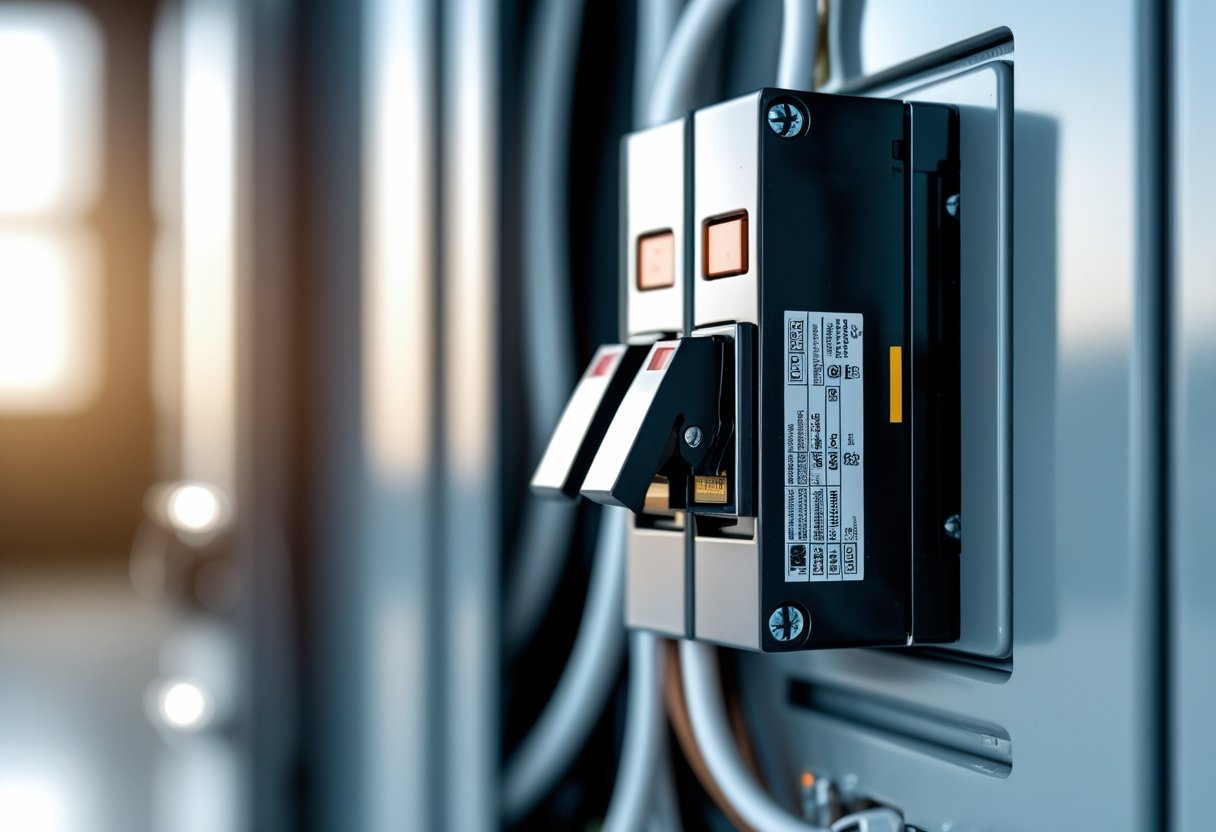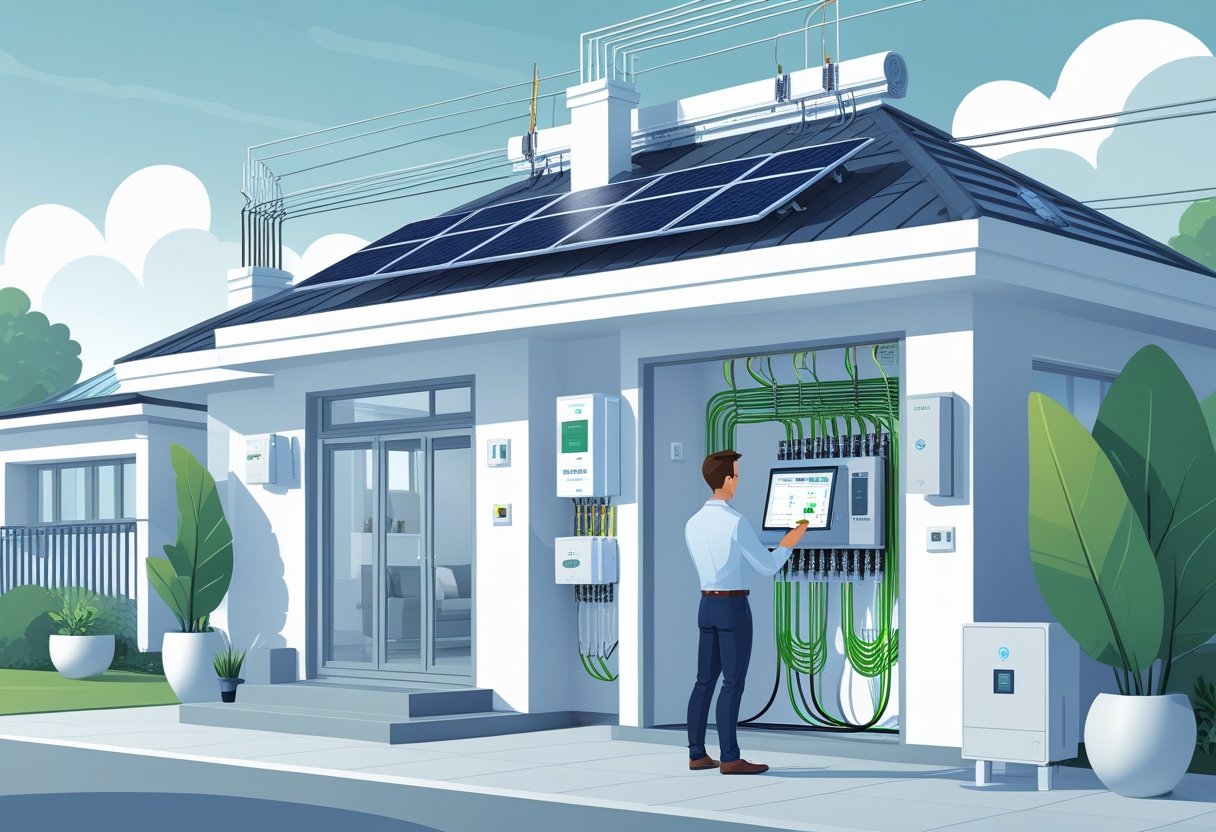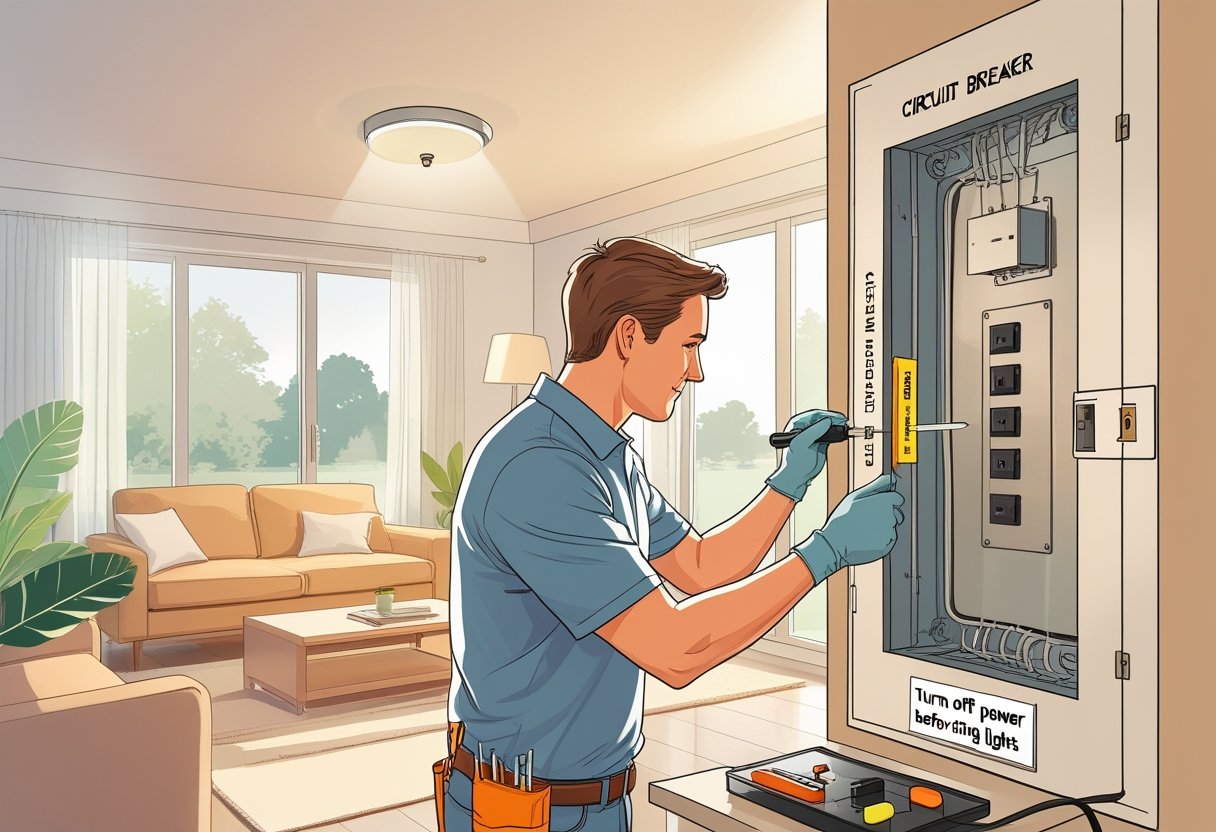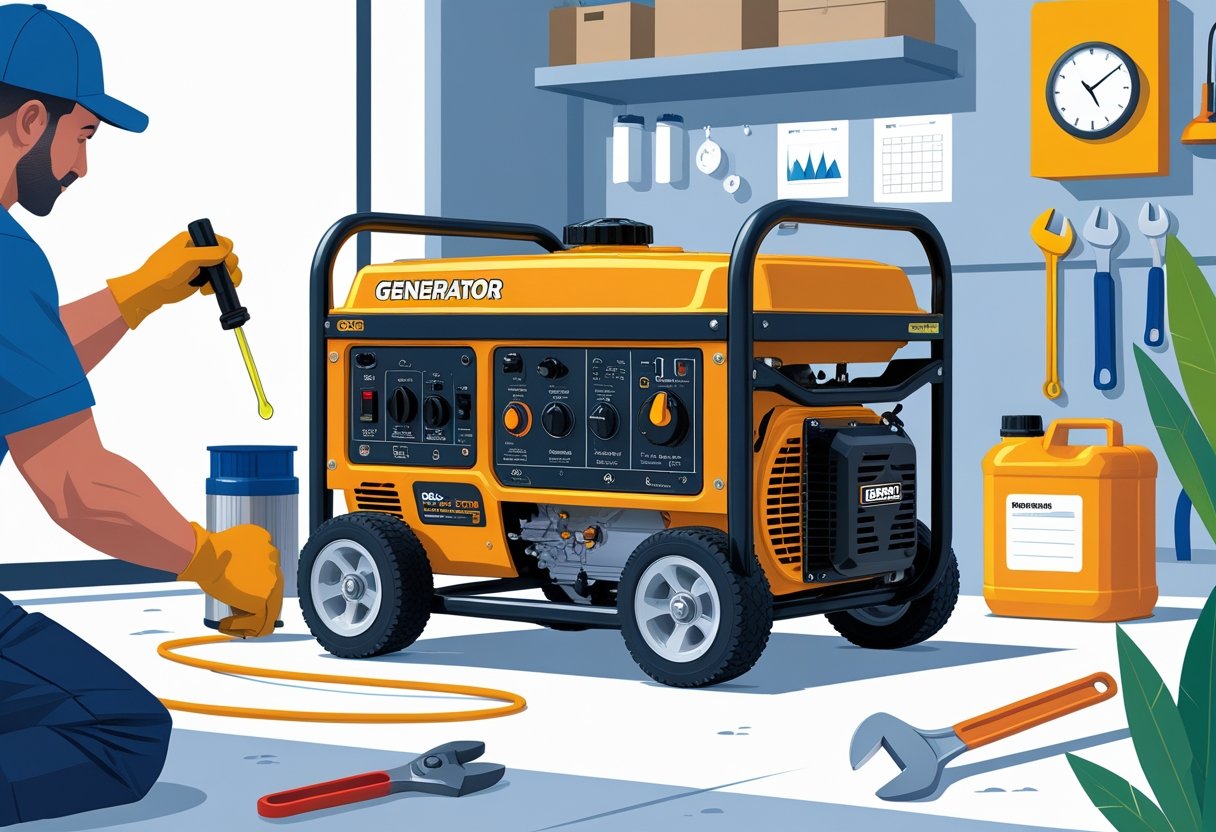If your circuit breaker keeps tripping, it’s more than a minor hassle. Most of the time, it’s because your electrical system is overloaded, there’s a short circuit, or a ground fault—all of which can be risky for your home and your family’s safety. Plug in too many things at once, or run damaged appliances, and the breaker will trip to protect your home.
Ever wonder why the breaker keeps flipping even after you reset it? Sometimes, the breaker itself is just old or faulty, or there’s hidden wiring trouble. That’s when you need someone who knows what they're doing—like AAA Electrical Services in Sacramento. They’re big on safety and show up fast, usually the same day, with vans stocked for most fixes and honest, upfront pricing.
If you know what’s causing the breaker to trip, you’re already halfway to a safer, more reliable home.
Understanding How Circuit Breakers Work
Circuit breakers are your home’s first line of defense against electrical trouble. They sense things like too much current or wiring faults and cut off power before things get dangerous. If you get how breakers work, you’ll spot issues sooner—and maybe avoid a nasty surprise.
Basic Function and Purpose
Circuit breakers are safety devices that shut off electricity when something’s wrong. Their job? Keep your wiring and appliances from getting fried by too much current.
Plug in too many things, or run a bunch of power-hungry devices, and the breaker will trip. That stops the power, keeping wires from overheating or starting a fire.
You can reset the breaker by flipping it back on—assuming you’ve fixed the problem. This reset function makes them handy and reusable.
Types of Circuit Breakers
You’ll find a few main types of breakers at home: standard breakers, ground-fault circuit interrupters (GFCIs), and arc-fault circuit interrupters (AFCIs).
- Standard breakers handle overloads and short circuits.
- GFCIs cut power during ground faults, which helps prevent shocks.
- AFCIs sense electrical arcs that could cause fires.
Each type targets a different risk, but they all work the same basic way—cutting the power when something’s off.
How Tripping Protects Your Home
When a breaker trips, it instantly stops electricity on that circuit. That quick action keeps wires from overheating or sparking a fire.
If your breaker keeps tripping, there’s probably an overload, a bad appliance, or wiring that needs attention. Don’t ignore it—get an expert to take a look.
Common Causes of Repeated Tripping
If your circuit breaker keeps tripping, something’s putting extra strain on your electrical system. Maybe a circuit’s carrying too much, there’s a wiring issue, or the electricity’s taking a shortcut to the ground.
Overloaded Circuits
An overloaded circuit happens when you run too many gadgets at once on the same line. Every breaker has a limit (measured in amps), and if you run, say, a space heater, microwave, and AC on one circuit, you’ll probably trip it.
To fix it, unplug a few things or move them to different outlets. If you’re always overloading, you might need a panel upgrade. AAA Electrical Services can help with that, and they’re quick about it.
Short Circuits
A short circuit is when a hot wire touches a neutral or ground wire, sending a surge of electricity that trips the breaker immediately.
These shorts can come from damaged wires, loose connections, or a busted appliance. You might notice frequent trips, flickering lights, or even a burning smell. If you spot any of these, call a pro. AAA Electrical Services will track down the problem and fix it, no hidden fees.
Ground Faults
A ground fault is when electricity escapes its normal path and heads straight to the ground. That’s dangerous—someone could get shocked. GFCIs catch this and shut off power fast.
Water, damaged cords, or worn outlets (think kitchens, bathrooms, outdoors) are common culprits. If certain breakers trip a lot in these spots, a ground fault might be behind it. An electrician can test and fix GFCIs to keep things safe.
Diagnosing Repeated Breaker Trips
If your breaker keeps tripping, something’s up with your electrical system. Figuring out what’s causing it can keep you safe and save you headaches later. You’ll want to know which circuits, devices, or habits are triggering the trips.
Identifying Problem Circuits
First, check which breaker keeps tripping. Your panel should have labels. If it’s always the same one, that’s your trouble spot.
Unplug everything on that circuit. Flip the breaker back on, then plug things in one by one. If it trips after a certain device, bingo—that’s your culprit.
Some circuits just get more use. If you’re running too many big appliances together, you’ll overload it. Spread things out if you can.
Testing Appliances and Devices
Unplugging appliances helps you zero in on faulty ones. Sometimes it’s an appliance with a short or ground fault.
Try plugging it into a different circuit. If the new breaker doesn’t trip, the appliance is probably fine and the wiring might be the issue.
If you’re not sure, test with a multimeter or call a pro. AAA Electrical Services can test and repair whatever’s acting up, usually same day.
Observing Patterns in Breaker Trips
Pay attention to when the breaker trips. Is it during heavy use or at certain times? That can point to overloads or wiring problems.
If it trips when certain things run together, try using them separately. If you can’t find a pattern, you might have a bad breaker or wiring issue. Time to get an electrician in.
Knowing when and how trips happen makes it easier to fix—and safer for everyone.
Electrical Panel and Breaker Issues
Your electrical panel and breakers are the backbone of your home’s safety. If something’s off, breakers might trip over and over. Old breakers, bad wiring, or loose connections can all cause trouble.
Aging or Faulty Circuit Breakers
Breakers don’t last forever. As they get older, they can weaken or just stop working right. Sometimes they’ll trip for no real reason.
If your breaker trips a lot, even with normal use, it might be worn out or damaged. Old breakers are a risk, so have an electrician check or replace them. AAA Electrical Services handles breaker repairs and installs with safety in mind.
Improper Wiring
Bad wiring in your panel or circuits can make breakers trip constantly. If wires are hooked up wrong or circuits overlap, it stresses the breakers.
Problems like the wrong wire gauge or mixed-up wires can cause shorts or overloads. You’ll want a pro to check and fix this stuff. It’s not a DIY job if you want things safe and steady.
Loose Connections
Loose wires or terminals inside your panel can cause repeated trips. When connections aren’t tight, electricity can arc or flow weirdly, which is dangerous.
If you notice flickering lights or buzzing, don’t mess with it yourself. AAA Electrical Services can find and tighten things up, usually same day. That keeps your home safe and avoids bigger headaches.
Home Appliances That Can Cause Tripping
Some appliances are more likely than others to make your breaker trip. Some just use a ton of power, while others might have hidden faults. Knowing which ones are troublemakers can help you avoid problems.
High-Wattage Devices
Things like space heaters, air conditioners, microwaves, and ovens pull a lot of juice. Run a few at once on the same circuit, and you’ll probably trip the breaker.
Try not to use a toaster and microwave together on one outlet, for example. That’s a classic overload.
Spread out big appliances on different circuits. If you keep overloading, it might be time to call an electrician. AAA Electrical Services does panel upgrades and can add circuits to handle more power.
Malfunctioning Appliances
Sometimes it’s not the load, but a bad appliance. A device with damaged wiring, a worn-out motor, or a short inside can trip the breaker again and again.
A washing machine with a bad motor or a fridge with a faulty compressor can be the culprit. These aren’t just annoying—they’re fire hazards.
If you think an appliance is to blame, unplug it and reset the breaker. If trips stop, get the appliance checked. AAA Electrical Services can diagnose and repair electrical faults, always with safety in mind.
Preventing Frequent Breaker Trips
You can avoid most breaker trips by taking a few simple steps. Managing your power use and keeping your system checked go a long way.
Balancing Electrical Loads
Breakers trip when a circuit gets overloaded. Spread out your heavy-use appliances—don’t run the microwave, heater, and vacuum on the same circuit if you can help it.
Take a look at your electrical panel to see which outlets are on which circuits. If you get a lot of trips, try plugging big stuff into different spots. If you’ve added new appliances, maybe it’s time to upgrade your panel, since old wiring can struggle to keep up.
Balancing the load keeps your breakers from working overtime and helps your home run smoother.
Scheduling Regular Inspections
Breaker trips can also come from hidden problems—old wiring, bad breakers, that kind of thing. It’s smart to have a licensed electrician inspect your home every year or two.
During an inspection, they’ll check your breakers, wiring, and outlets. Catching problems early keeps your family safe and saves money in the long run.
AAA Electrical Services offers thorough inspections around Sacramento, focusing on safety and honest communication. Certified techs, same-day service, flat-rate pricing—it’s all about peace of mind. Regular check-ups help keep your electrical system humming and your home safe.
When to Call a Licensed Electrician
If your circuit breaker keeps tripping—especially more than just once or twice—it's time to call a licensed electrician. Frequent trips usually mean something’s wrong: maybe faulty wiring, a sneaky short circuit, or an overloaded panel. Letting it slide? Not a great idea. You could end up with damage or a real electrical hazard.
Watch for these warning signs and call a pro right away:
- Burning smells or scorch marks near outlets or the breaker panel
- Buzzing or weird sounds from your circuit breaker
- Lights that flicker or dim when you use them
- Breakers that trip even when you’re only running one or two things
AAA Electrical Services can get to you same-day in Sacramento and the surrounding area. Their licensed techs show up with fully stocked vans, so they usually fix things on the spot. No endless waiting, no extra risk.
Honestly, safety-first electrical work by licensed pros really does keep your family and home protected. It’s just not worth the gamble—let a certified expert check your system before things get worse.
AAA Electrical Services stands out for honest pricing, straightforward communication, and a real focus on keeping families safe. If you need circuit breaker repair or any other electrical help, just reach out. Peace of mind is kind of a big deal.
Potential Safety Hazards of Ignoring Breaker Trips
When a circuit breaker trips again and again, your home’s basically waving a red flag. Ignoring it? That’s risky. Overloaded circuits, faulty wiring, or short circuits are usually the culprits.
Electrical fires top the list of dangers. If circuits overload or short out, wires can overheat and catch nearby stuff on fire. The longer you wait, the worse it gets.
Your appliances and electronics aren’t safe either. All those power interruptions can wreck them, leading to annoying malfunctions or even expensive replacements.
There’s also the risk of electric shocks. Faulty wiring or a damaged breaker can expose you or your family to dangerous currents. You want safety-first electrical work to help dodge those risks.
AAA Electrical Services does quick, same-day service with certified techs who treat your home like their own. Stocked vans mean fast repairs, often in just one stop. They focus on safety and honest pricing—no gotchas.
If your breaker keeps tripping, don’t put it off. Get pros who know how to find and fix the real problem. Your family’s safety—yeah, it depends on it.
Long-Term Solutions for Electrical Reliability
If circuit breakers keep tripping, your electrical system needs some love. The best long-term fix? Upgrade your electrical panel. Old panels just can’t keep up with today’s power needs. Upgrading helps your home handle everything safely.
You’ll also want to reduce overloads. Don’t cram too many devices onto one circuit. Spread out your gadgets and, if you’ve got big appliances or an EV charger, get a pro to install dedicated circuits.
Regular electrical inspections catch things early—like faulty wiring or worn-out breakers. AAA Electrical Services offers same-day inspections and repairs, and since their vans are stocked, most fixes happen right away.
Boost your safety with surge protection and regular maintenance. Surge protectors help shield circuits from sudden spikes. Staying on top of repairs and upgrades keeps nasty surprises at bay.
When you choose professionals who genuinely care about your family’s safety, you get honest, reliable work. AAA Electrical Services covers Sacramento and nearby areas with licensed, background-checked techs who put safety first and keep pricing clear.
Frequently Asked Questions
Repeated breaker trips usually mean you’ve got electrical issues—overloads, faults, maybe wiring problems. Knowing what’s behind those trips helps you keep your place safe and avoid bigger headaches.
Is it dangerous if a circuit breaker keeps tripping?
Absolutely. Frequent trips often mean overloaded circuits or bad wiring. Left unchecked, you could face electrical fires or serious damage.
Why might a circuit breaker trip with no appliances plugged in?
If there’s no load but the breaker still trips, it’s probably wiring faults, ground faults, or a bad breaker. You’ll want a pro to check it—these aren’t things to ignore.
What could cause a breaker to trip repeatedly in a single room?
Usually, too many devices on one circuit overload it. Sometimes it’s a damaged wire or a faulty outlet in that room.
Could plugging in a device cause a breaker to trip, and why?
Yep. If a device draws more power than the circuit can handle or has a short, the breaker trips to protect everything else.
What steps should be taken if a breaker trips immediately after a reset?
Don’t keep resetting. Unplug everything on that circuit and call a licensed electrician. Immediate trips are a red flag for serious issues.
If a circuit breaker trips without any apparent cause, what might be the issue?
Sometimes the breaker just wears out or malfunctions. Or maybe there’s a sneaky short circuit or ground fault hiding somewhere in your wiring—definitely something you’d want a pro to check out.
If you’re around Sacramento, AAA Electrical Services can usually swing by the same day. Their certified techs know how to keep your place safe, so you don’t have to stress.





